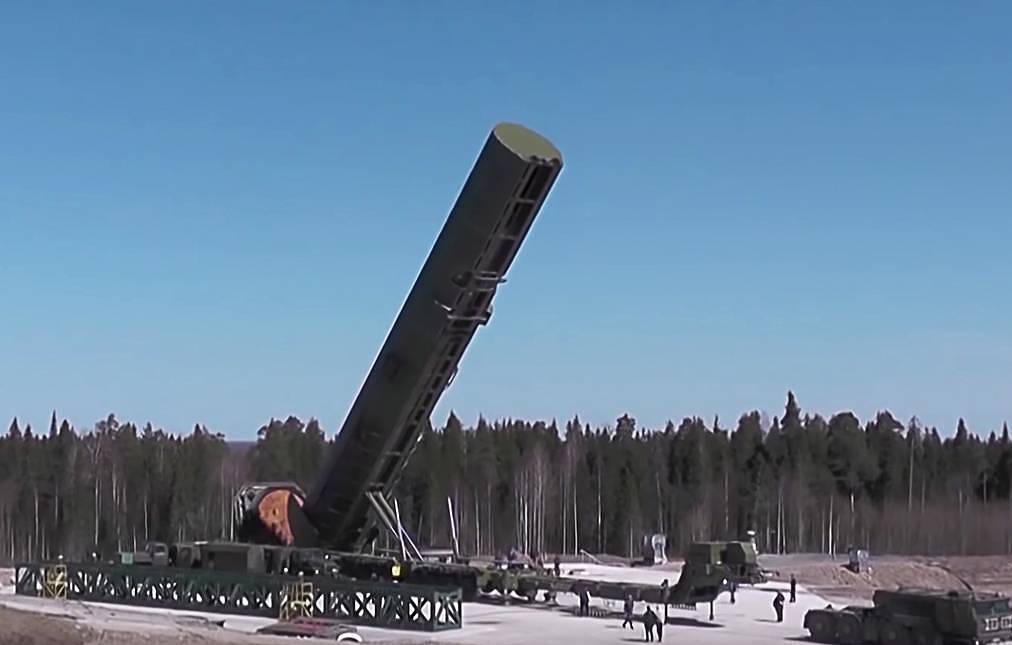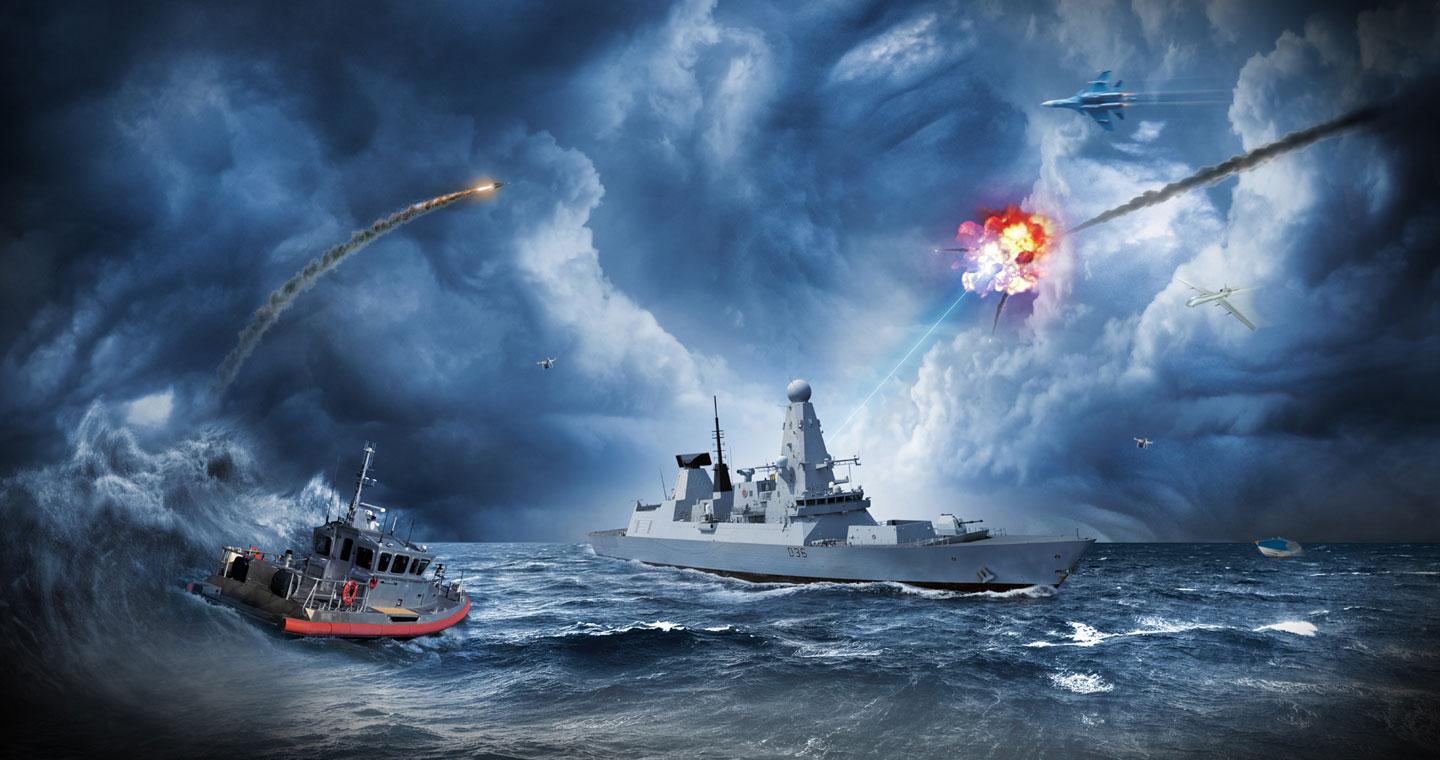Following Russian state TV’s threat to ‘wipe Britain off the map’ with a ‘big beast’ hypersonic 208-ton ‘Satan-2’ Sarmat intercontinental ballistic missile (ICBM), the British media retaliated by claiming that the Royal Navy could ‘wipe off’ Russian hypersonic missiles with its laser weapons.
‘Knocked Out’: Russia’s Most Advanced Tank Goes Up In Flames After Ukrainian Army Gets A Direct Hit — Watch
The British laser weapons would be mounted on ships and fire a high-energy light beam that can be used to track and destroy enemy drones, said British media, citing a threat to Putin’s hypersonic missiles in an Express report titled, “Royal Navy’s £130m laser can wipe out Putin’s hypersonic missiles in seconds.”
The British Ministry of Defense had earlier set aside £130 million ($137.7 million) to create three “directed energy weapons” (DEW) that are to be installed on warships, aircraft, helicopters, and armored vehicles.
The direct threat to wipe out Russian hypersonic weapons could be seen as the British media’s response to Russian state-media propaganda where pro-Putin TV anchor Vladimir Solovyov had said at ‘Putin’s Voice’ that Russia could ‘wipe Britain off the map’ with President Vladimir Putin’s new ‘big beast’ hypersonic 208-ton 15,880mph ‘Satan-2’ intercontinental ballistic missile.

While Satan-2 or Sarmat ICBM is not a hypersonic missile in itself, Russia plans to team it up with its existing Avangard hypersonic missile for maximum impact on strike.
“As it turned out, one Sarmat means minus one Great Britain,” he had said on-air as a direct threat to Britain for its assistance to Ukraine and its rhetoric against Russian forces.
It’s possible that the British media referred to the futuristic DEW to respond to Russian threats because several experts have claimed that since the laser moves at the speed of light, it might be able to successfully take down a hypersonic missile.
However, doubts regarding these claims persist due to the novelty of both hypersonic and laser weapons.

On its part, the laser and radiofrequency weapons require no ammunition and are fueled by electricity, indicating an advancement in technology. On the other hand, Radiofrequency weapons can disrupt and cripple adversary computers and electronics within seconds.
The new DEW systems are to be tested on Royal Navy ships in 2023, and if successful, they might be deployed to frontline units within a decade.
The announcement for these DEWs was made by the British Ministry of Defense in 2019. It had then stated that the systems could be powered by a vehicle’s engine or a generator, lowering operational costs and allowing for unprecedented frontline flexibility.

The UK’s DEW program is not new. The weapons that remain under development will be added to existing weaponry in which Whitehall has already invested £30 million. The Dragonfire of the Royal Navy is a laser weapon mounted on warships that can annihilate drones and fast-attack crafts.
Though the British media warned of destroying Russian hypersonic missiles, the UK itself does not have a hypersonic weapon, unlike Russia, which used a hypersonic missile in combat against Ukraine in March.
The UK, however, has signed an agreement with the US and Australia to develop hypersonic weapons jointly.
British Directed Energy Weapons
The ‘Dragonfire’ Laser Weapon was tested in 2019, with the Ministry of Defense (MoD) releasing a video of the lethal technology, which showed the 50kW laser gun melting metal within seconds.
Using a variety of effects, the Dragonfire is meant to offer short-range air defense and close-in protection for naval vessels. These include blinding a potential threat’s targeting sensors to identify, track, and prevent it, as well as harming or even eliminating it, according to Leonardo, which developed the system’s beam director. The system was manufactured by a consortium of manufacturers led by MBDA.
The new DEWs would go over and beyond the capacity of the Dragonfire. According to The Express, the new weapons would be significantly more powerful as they will combine multiple laser beams at once.
In September last year, the UK Ministry of Defense (MOD) awarded three contracts to the Royal Navy and the Army to deploy directed energy weapons- two high-power lasers and one radio-frequency (RF) device.
At the time, it had announced that the first laser would be used to identify, track, engage and counter unmanned aerial vehicles (UAVs) onboard a Royal Navy Type 23 frigate.

Meanwhile, a laser demonstration will be mounted atop a “Wolfhound” armored vehicle for the British Army to examine its capability against UAVs and other airborne threats. The British Army will employ the RF weapon demonstration as well, which will be mounted on a “MAN SV” vehicle, to identify and track a variety of air, land, and sea targets.
Jeremy Quin, the defense minister in charge of procurement, said: “Directed Energy Weapons are a key element of our future equipment programs and we intend to become a world leader in the research, manufacture, and implementation of this next-generation technology.”
The directed energy weapons contracts were awarded to a consortium led by Thales and Raytheon UK, with each contract lasting four years.
The field testing will take place between 2023 and 2025 and will focus on how DEWs perform and how to maintain them and gain basic knowledge and expertise with the technology.
Not just the UK but the US, Russia, China, and Israel have or are at a very advanced stage of developing laser weapons. Going forward, these weapons are expected to proliferate for their immense utility in an interception, destroying targets, and a low operating cost.
- Contact the author at sakshi.tiwari9555@gmail.com
- Follow EurAsian Times on Google News




